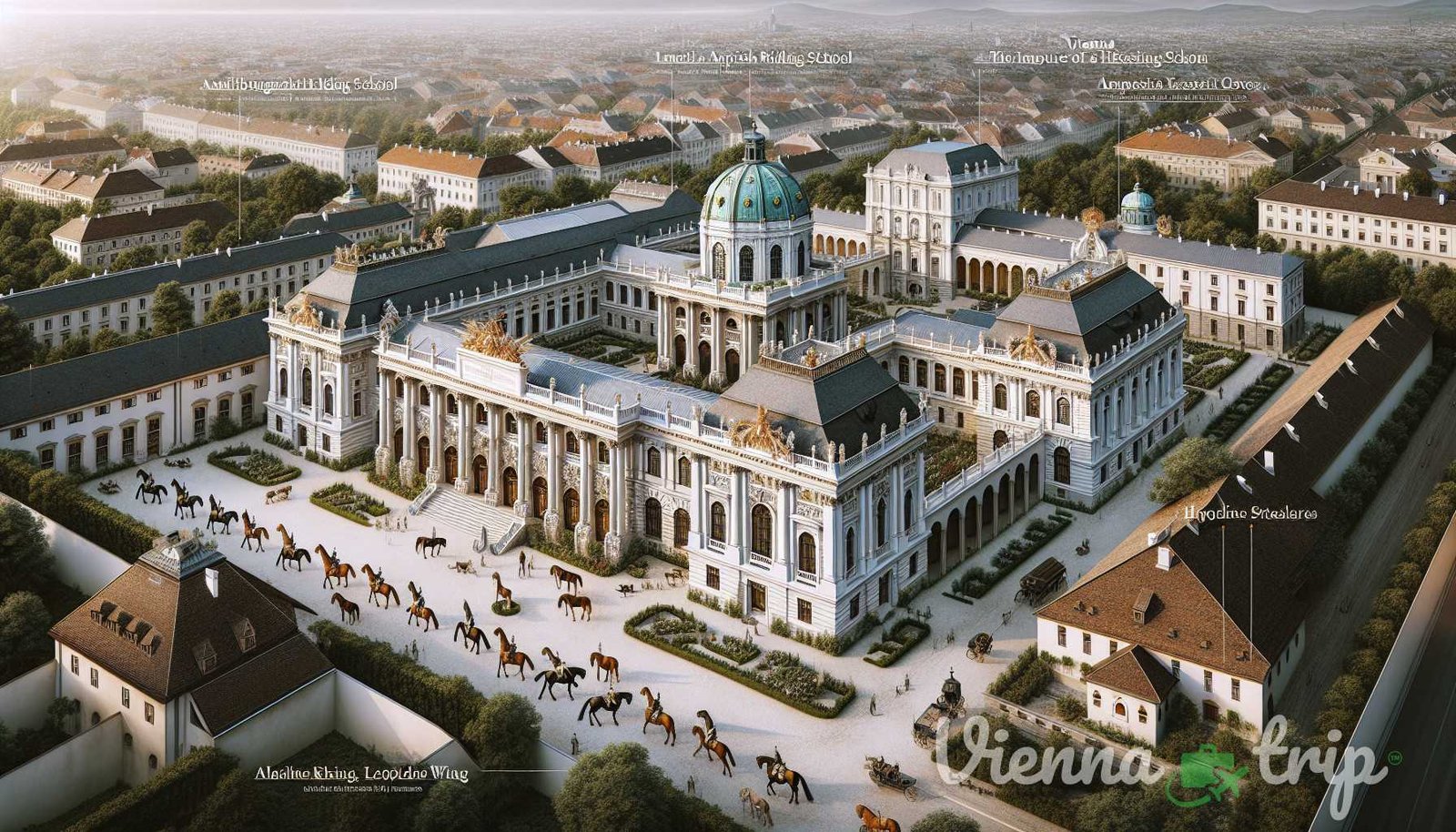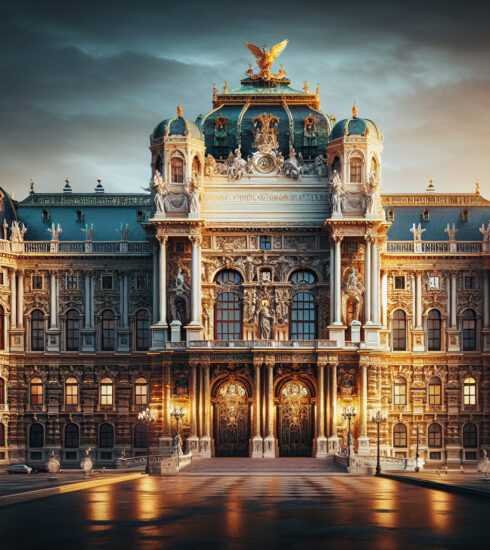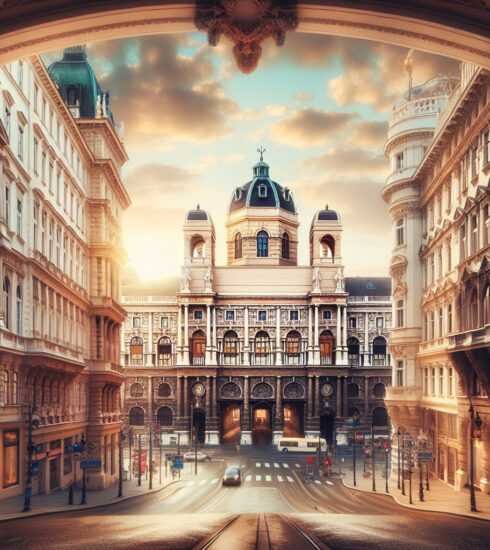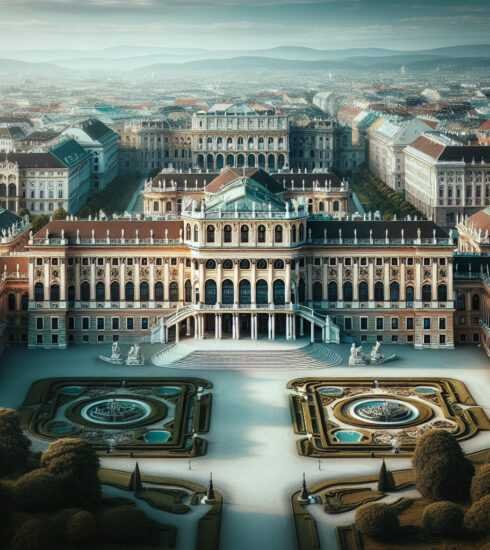Hofburg Vienna: Unveiling the Treasures of Viennas Historic Heart
Exploring the Hofburg: Vienna’s Historic Heart
Vienna, the capital of Austria, is a city rich in history, culture, and architectural beauty. At the center of this magnificent city lies the Hofburg, a sprawling complex that has been the seat of power for the Habsburg dynasty for over six centuries. The Hofburg is not just a palace; it is a symbol of the glory and might of the Austrian Empire. Today, it serves as the official residence of the President of Austria and is also home to several museums and attractions that offer a fascinating glimpse into the city’s past. Join us as we take a deep dive into the history and significance of the Hofburg Vienna.
A Brief History
The construction of the Hofburg began in the 13th century when it was a medieval castle for the Babenberg dynasty. However, it was under the Habsburg rule, starting in the 15th century, that the complex underwent significant expansion and transformation. Each successive emperor added their own architectural stamp to the complex, resulting in a unique blend of Gothic, Renaissance, Baroque, and Rococo styles.
Over the centuries, the Hofburg has served as the home for some of the most influential rulers in European history, such as Maximilian I, Maria Theresa, and Franz Joseph I. It has witnessed coronations, weddings, and political intrigue, and has been at the center of power during Austria’s most prominent periods.
Architecture and Layout
The Hofburg is an architectural marvel, boasting a vast complex of buildings and courtyards spread over an area of 240,000 square meters. The complex is divided into different wings and sections, each with its own distinct character and purpose.
Some of the most notable buildings within the Hofburg complex include:
- The Swiss Wing: This section was originally a medieval fortification and now houses the Imperial Chancellery and the President’s offices.
- The Amalienburg: Built in the 18th century, this wing accommodates the Spanish Riding School and the Lipizzan stallions.
- The Leopoldine Wing: This wing is home to the famous Hofburg Treasury, which houses an impressive collection of treasures, including the Imperial Crown of Austria.
- The Albertina: Originally built as a residence for Duke Albert of Saxony-Teschen, today it houses one of the most important art collections in Austria.

The architecture of the Hofburg is a testament to the changing styles and tastes of the various rulers. From the Gothic splendor of St. Stephen’s Cathedral to the opulence of the Imperial Apartments, every corner of the Hofburg showcases the grandeur and elegance of the Austrian Empire.
Attractions and Museums
Today, the Hofburg Vienna is not just a historic residence; it is also a cultural hub that attracts millions of visitors each year. The complex is home to several museums and attractions that offer a glimpse into Austria’s rich history and cultural heritage. Some of the must-visit sites within the Hofburg include:
The Imperial Apartments
The Imperial Apartments, once the private living quarters of Emperor Franz Joseph I and Empress Elisabeth (Sisi), provide a fascinating insight into the daily lives of the imperial family. The rooms are beautifully preserved, with opulent furnishings, exquisite artwork, and personal artifacts that transport visitors back in time.
The Sisi Museum
The Sisi Museum is dedicated to the life and legacy of Empress Elisabeth. The museum showcases her personal possessions, including clothing, jewelry, and personal correspondence. It offers a captivating glimpse into the life of this enigmatic and tragic figure.
The Hofburg Treasury
The Hofburg Treasury houses a remarkable collection of treasures, including the Imperial Crown, the insignia of the Holy Roman Empire, and the Austrian Order of the Golden Fleece. Visitors can marvel at these exquisite artifacts, which span over a thousand years of history.
The Spanish Riding School
The Spanish Riding School is a world-renowned institution that has been training riders and horses in the art of classical dressage for over four centuries. Visitors can witness the elegant performances of the famous Lipizzaner stallions in the stunning Baroque Winter Riding School.
The Albertina
The Albertina houses one of the most important art collections in Austria, featuring works by masters such as Monet, Picasso, and Klimt. The museum also boasts an extensive collection of architectural drawings and prints, making it a treasure trove for art and architecture enthusiasts.
Natural History Museum Vienna
Located in the Neue Burg wing of the Hofburg, the Natural History Museum Vienna is a haven for science enthusiasts. The museum houses an extensive collection of fossils, minerals, and meteorites, as well as exhibits on earth sciences, anthropology, and evolution.
Exploring Hofburg District
The Hofburg is not just a single complex; it is the centerpiece of a vibrant district that is teeming with history and culture. Located in the heart of Vienna, the Hofburg District is a delight to explore, with its charming streets, historical sites, and lively atmosphere.
Some of the other attractions in the Hofburg District include:
- St. Stephen’s Cathedral: A towering Gothic masterpiece, St. Stephen’s Cathedral is one of Vienna’s most iconic landmarks. Visitors can climb to the top for panoramic views of the city.
- The Vienna State Opera: A world-renowned opera house, the Vienna State Opera offers spectacular performances of opera and ballet throughout the year. It is considered one of the finest opera houses in the world.
- The Volksgarten: A beautiful public park located behind the Hofburg, the Volksgarten is famous for its rose gardens and the neoclassical Theseus Temple.
- The Belvedere Palace: Just a short distance from the Hofburg, the Belvedere Palace is a remarkable Baroque masterpiece that houses an impressive collection of art, including Gustav Klimt’s iconic painting, “The Kiss.”
Visitors to the Hofburg District can also explore the vibrant shopping streets, indulge in Viennese cuisine at quaint cafes and restaurants, and soak in the atmosphere of this historic neighborhood.
Conclusion
The Hofburg Vienna is more than just a historic palace; it is the heart and soul of the city. With its rich history, stunning architecture, and world-class museums, the Hofburg offers a captivating glimpse into the grandeur of the Austrian Empire. Whether you are a history buff, an art lover, or simply a curious traveler, a visit to the Hofburg is an essential part of any trip to Vienna. So, come and explore the Hofburg, and immerse yourself in the rich tapestry of Vienna’s past.
Sources:
- Wikipedia. “Hofburg.” https://en.wikipedia.org/wiki/Hofburg.






ᐈ Unveiling Belvedere Secrets: Explore the Extravagance of Vienna's Magnificent Palace | Vienna: Elegant, Informative, Timeless
3 months ago[…] more information about Vienna’s imperial palaces and architecture, check out these articles: Hofburg Vienna and Schönbrunn […]
ᐈ Uncovering Vienna's Secrets: Embark on a Fascinating Journey Through Time. Vienna: Elegant, Informative, Timeless.
2 months ago[…] For more information about the Spanish Riding School and the Lipizzaner horses, check out this article available at https://vienna-trip.fun/imperial-palaces-architecture/hofburg-vienna/. […]